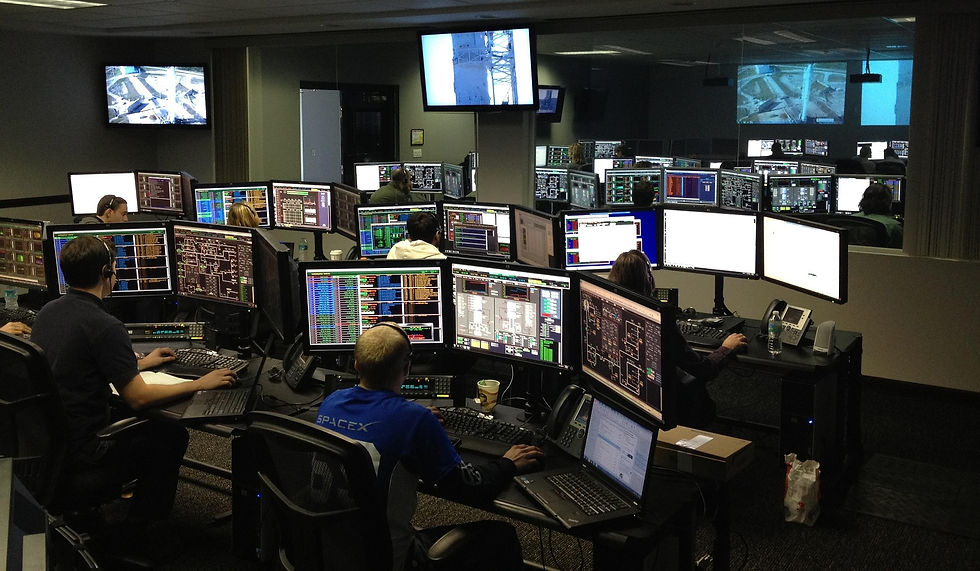The 10 Principles of Resilient Leadership.
- David Yates

- May 4
- 5 min read
From Concept to Capability.
If resilience is the new lens for leadership, then the next question is obvious: how do we build it? Not just in theory, but in practice. In individuals, across teams and organisations.
The answer lies in moving beyond slogans and metaphors. Resilience is not a motivational poster or a personal trait we summon in a crisis.
Resilience is a lived capability: a combination of mindsets, habits, system design and cultural conditions that together determine how well we adapt under pressure.
This instalment outlines what we consider to be the ten foundational principles of resilient leadership.
Each is supported by real-world research, grounded in systems thinking and immediately translatable into leadership practice.

1. Embrace Complexity and Plan to Adapt.
Resilient leaders start from a place of realism.
They accept that systems are imperfect, surprises are inevitable and no plan survives first contact unchanged. They don’t strive for total control, they design for flexibility.
This means scenario thinking, briefings and contingency planning are not afterthoughts.
They are part of normal operations and a resilient leader regularly asks their team: What if things don’t go to plan? What does plan B (or C) look like?
Karl Weick calls this a “preoccupation with failure.”
It’s not pessimism. It’s preparedness.
In short, we brief to plan.

2. Foster a Learning Culture: Curious, Not Punitive.
At the heart of resilient leadership is the courage to learn from failure.
That requires psychological safety and it also requires a systems view that sees errors not as individual faults, but as data about how the system is operating and how the system made that error likely.
Amy Edmondson’s work shows that high-performing teams often report more errors, not because they fail more, but because they hide less.
Resilient leaders respond to mistakes with curiosity: What helped this go right? What made it hard? Where did we stretch beyond the design?
Sidney Dekker calls this a Just Culture: one that balances accountability with learning. In such environments, people speak up early, problems surface fast and performance improves over time.
3. Build Redundancy and Flexibility Into Systems.
In complex systems, single points of failure are dangerous. Resilient leaders design overlap, margin and slack into how work is done. This doesn’t mean waste, it means resilience by design.
It looks like cross-trained teams, staggered shift handovers, fail-safes and buffer capacity for unexpected surges.
David Woods calls this “graceful extensibility” the ability of a system to stretch under pressure without snapping.
It’s also a mindset: expect things to break and have recovery routes ready, ahead of time.

4. Cultivate Situational Awareness: Respond,
Monitor, Anticipate.
Hollnagel’s four cornerstones of resilience (respond, monitor, anticipate, learn) offer a leadership blueprint.
Resilient leaders spend less time in the boardroom and more time understanding how work actually happens.
They walk the floor, talk to operators, track signals of strain before they escalate. They ask: What are we missing? What’s changing? What’s not being said?
It’s the opposite of command-and-control. It’s stay-close-and-listen.
High Reliability Organisations call this “sensitivity to operations” a sharpness to the present moment that catches drift before it becomes disaster.
5. Decentralise and Empower Decision-Making.
In fast-moving scenarios, the person closest to the issue often has the best information. Resilient leadership respects that, pushes authority down and trusts expertise over hierarchy.
In HROs (High Reliability Organisations), deference to expertise is a core tenet: the right answer wins, not the highest rank.
This requires training, trust and clarity about roles, but the payoff is speed, accuracy and confidence when stakes are high.
A resilient leader creates conditions where people don’t need permission to do the right thing. They’ve already practiced that autonomy in calm moments, so it’s there when it counts.

6. Encourage Experimentation and Adaptive Capacity.
Adaptation isn’t just for emergencies. It happens every day in the small decisions teams make under ambiguity.
Leaders who encourage low-stakes experimentation build this muscle constantly. That might mean hackathons, stretch assignments, or simply a team culture that says “Let’s try it and learn.”
The key is safety, people must know that attempts are welcome, even if outcomes vary.
This approach trains the mindset that change is normal and that responding creatively to it is part of the job. It’s also the mother of all innovation.
7. Practice and Prepare for Extremes.
You don’t rise to the level of your ambition. You fall to the level of your training.
Resilient leaders know this. They build drills, simulations and “what if” exercises into the rhythm of work. Emergency response teams rehearse regularly, Pilots are trained and checked regularly in simulators and Military units drill all manner of procedures until they’re second nature.
When the real crisis hits, it’s not new. It’s practiced.
That familiarity breeds calm and calm allows clarity in decision-making. This way every practice scenario becomes a chance to refine both system and self.
8. Model Composure and Empathy.
In any moment of stress, teams look to the leader.
Are they calm? Are they listening? Do they care?
Resilient leadership is both composed and human.
It blends self-regulation (through mindfulness, values, breathing, reflection) with outward empathy (through listening, validating and adjusting).
This doesn’t mean suppressing emotion, it means using emotion wisely.
Perhaps saying, “This is tough, but we’ll get through it together.”
That emotional tone is contagious and it’s one of the most powerful resilience levers a leader has.

9. Guard Against Drift and Complacency.
Drift happens when people slowly move away from standard practices, not out of negligence, but because nothing bad happened.
Over time, shortcuts become norms.
Diane Vaughan called this the “normalisation of deviance.” Scott Snook called it “practical drift.” Both are deadly and both are hard to see from the inside.
Resilient leaders stay alert to this. They ask: What are we tolerating now that we wouldn’t have a year ago? Where have standards slipped without notice?
They rotate teams, run audits, invite outsiders in.
They reward vigilance, not just output.
10. Reflect, Codify, and Evolve.
Resilience is not a one-off effort. It’s a continuous cycle of learning, adjusting and maturing.
After every project, event, or incident, successful or not, resilient leaders ask: What did we learn? What do we want to do differently? What worked surprisingly well?
They build reflection and review into the DNA of their work. We brief to plan, but we review.. to learn.
They codify lessons so knowledge isn’t lost when people leave. They treat every disruption as a potential gift, a moment of deep learning, a chance to strengthen both culture and capability.
In the words of David Woods, “they don’t bounce back. They bounce forward.”
Closing: A Playbook in Practice.
These ten principles are practical. They represent a set of behaviours and design choices that can be embedded into leadership development, operational reviews, team rituals and organisational routines.
Their implementation and nurturing require discipline, clarity and care.
When practiced consistently, they produce something rare: teams that feel supported, systems that adapt with integrity and leaders who can face turbulence with both calm and courage.
In Part 3, we’ll bring these ideas fully to life: through stories. Case studies from aviation, healthcare, military and emergency response will show how these principles play out in the real world, often under the most extreme pressure imaginable.
Because in the end, it’s not theory that proves resilience.
It’s what you do when the storm hits.




Comments